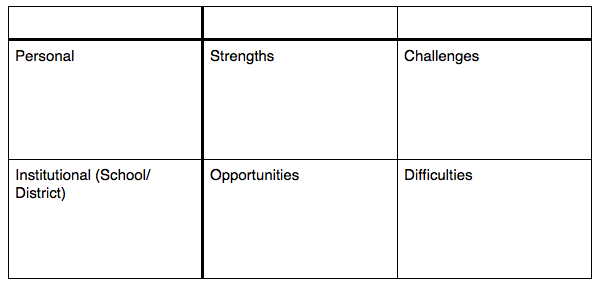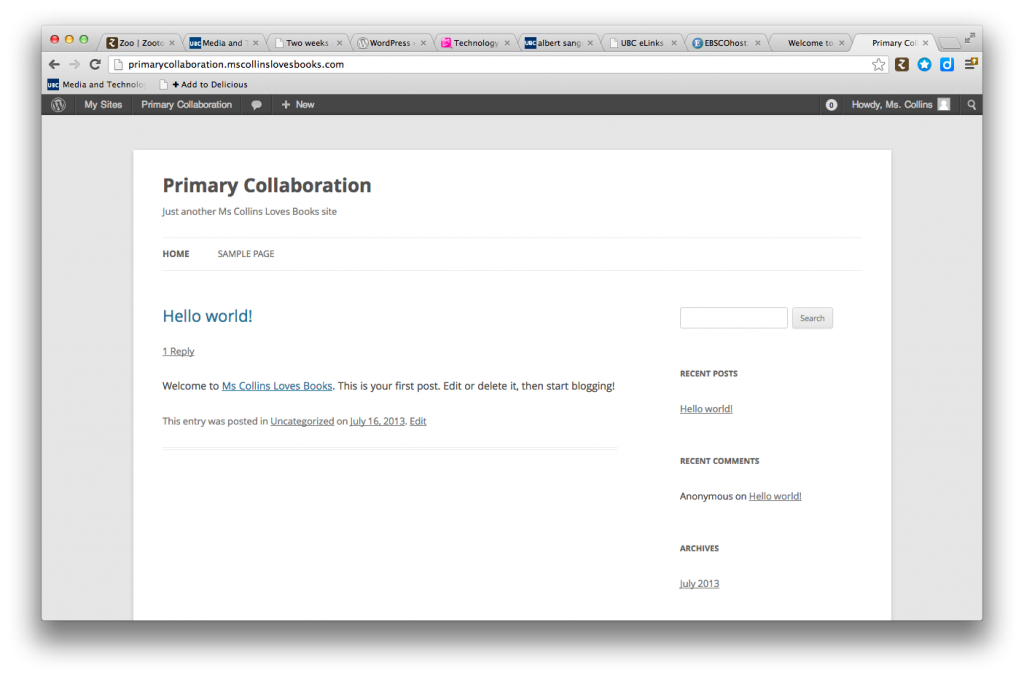I’m going to say this, at the risk of sounding like a total nerd, but I almost don’t want to write this last post, because it will mean this course is over. Although it has been an intense amount of reading, thinking, grappling, and writing, all packed into three weeks, I have truly enjoyed the process.
Where I Was
When I started this course I had finished 6 classes towards my diploma, now that this one and LLED 446 are finished I have 8 under my belt, and next week it will be 9. The end is in sight! I plan to be done my diploma at Christmas, which is very exciting. Because I had taken many of the foundation courses for teacher-librarianship I already had a good understanding of resource management, organizing and maintaining the collection, and planning collaboratively with teachers. In the process I have started and kept up a blog for my class, created a website, and started my personal learning network. I am very glad I took this course towards the end of my diploma, I know I wouldn’t have gotten nearly as much out of it if I had taken it first. I needed to get over my bibliophilia to recognize I could be technophilic too. I still love books, but technology needs to play a vital role in our schools and libraries.
Where I Am
Although my inquiry project is not really a polished product, I am proud of my work. I built the site using BuddyPress, which was a challenge, but I created a shell. I’m not going to invest more time in learning how to create a social network site, because the structure already exists within my district. On the resource section of my site I have uploaded my conglomeration of information from my research, a graphic organizer, and a powerpoint presentation I can use to give a workshop. (Don’t worry Kristine, the photos are from Morguefile and they don’t need attribution!) My powerpoint is more polished than my site, and I’m hoping it will be enough to convince primary teachers that they can and should integrate ICT in their classrooms. I found this great video on Edutopia that captured some of the feelings of inspiration and excitement from this course that I wanted to convey to other teachers, I will show it as part of my workshop.
Where I’m Going
I am excited about using my project to encourage primary teachers in my district. Initially I was thinking of just doing a workshop, but then Neelu spoke yesterday about the importance of ongoing professional development, so rather than a single workshop I think want to create a collaborative group. I have learned that I am much happier learning alongside my colleagues, rather than teaching them from the front of the room. I didn’t want to lose my momentum (or my nerve about giving a workshop!) so yesterday I emailed our district technology teacher, Janet Chow, asking for her help to implement my ideas in the fall. She already wrote me an email back and was very encouraging, so I know I already have one ally in my district, and another person who can support my PLN.
By nature, I am a duck– I just let things roll of my back, I go with the flow, and don’t usually get in a flap about anything. But now I see that if I always go with the flow, things will stay the same. Someone has to speak up for how we want education to be, and that needs to be teachers, otherwise it will be corporations trying to sell solutions that we don’t really need. So I think it’s time for me to be a terrier: “Hey! Look at me! We need better wifi in schools! We need small classes for personalized learning! Hey! Don’t ignore us! We need a learning commons with more space for collaborative teaching! Hey! Pay attention!”
This course hasn’t taught me a topic, it has taught me a mindset. I have learned to go out and research what is relevant to my own situation, to connect with others, to question what I hear and read, to not stop pushing and changing just because things have always been done a certain way. The attitudes I have now will carry me forward into this school year, and into the rest of the 21st century.

